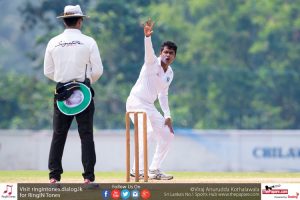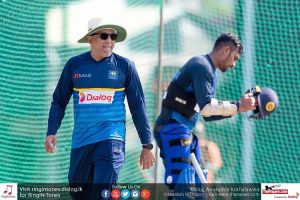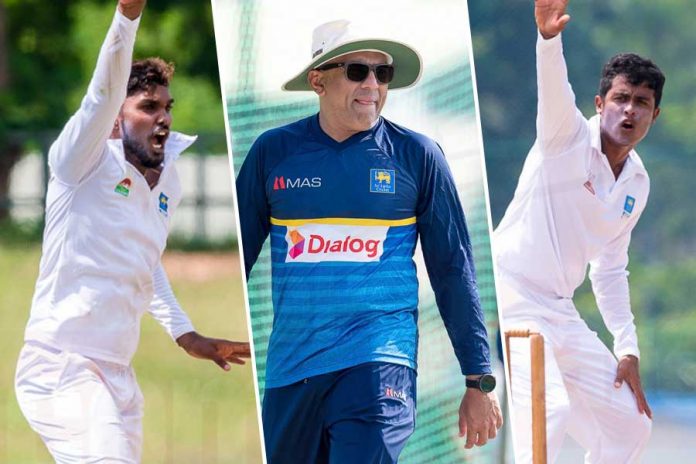We Sri Lankans treat leg-spin like the plague. In our history, leg-spinners do not feature prominently because we have failed to make best use of them.
The need to have Arjuna’s thick skin
In 1988, as young Sanjeeva Ranatunga returned home from..
The problem is not restricted to the present day but dates back to the times of Michael Tissera, who will turn 80 next year. In the 1970s, Tissera was Sri Lanka’s number one batsman and he focused more on making runs and bowled very little.
Most international teams are making merry with their leg-spinners. Not only the Indians, even Afghans and Nepalese are having a field day in the IPL, humbling some of the finest batsmen. Pakistan too have two fine leg-spinners in Yasir Shah and Shadab Khan.

The stats are stunning. In T20 cricket, the top five bowlers in ICC Rankings are wrist spinners while in ODI cricket three wrist spinners are among the top ten ranked players.
Since the arrival of Chandika Hathurusingha, there seems to be more attention paid to the art of leg-spin. Having tried the likes of Jeevan Mendis and Wanindu Hasaranga, he seems ready to give Jeffrey Vandersay an extended run. Whether the 28-year-old makes his debut in the Caribbean remains to be seen.
Why our leg-spinners have had little success over the years is because in domestic cricket our captains are not willing to back the practitioners of one of the most difficult arts in the game. In school cricket, leg-spin is becoming extinct as captains are wary of backing their bowlers. The moment a leggie goes for runs – early on in his spell – the coaches start yelling at the skipper. A leg-spinner needs about three to four overs to get into his groove. But in Sri Lanka we have got little patience to persevere and as a result our leggies have failed to make an impact at the world stage.
Tissera had modeled himself after Richie Benaud – an orthodox, side on action, bowling with a high arm and a prominent pivot.
Read: Is Sri Lanka missing a left-arm quick?
C.I. Gunasekara was also a fine leg-spinner and so was Neville Ponniah. But it was the likes of Gamini Goonasena and Malcolm Franke, who brought fame to Ceylon with their leg-spin bowling. Goonasena represented Nottinghamshire and Cambridge University. Franke, who played for NCC, migrated to Australia and played First Class cricket for Queensland.
Former Australian captain Ian Chappell rated him highly and once commented, “Franke was a very steady type of spinner, with good line and length”
Ashley Mallet, an Australian Test cricketer considered his contemporary was the best Australian leggie during his time.
Most of us know Elmo Rodrigopulle as a cricket writer. But he was also a good leg-spin bowler during his school days. The former St. Benedict’s captain once claimed a hat-trick over S. Thomas’ in an Inter-School match.

It remains to be seen whether Vandersay emerges as Sri Lanka’s leading spinner once Rangana Herath ends his career. SLC had hired former Australian leggie Peter Sleep on a two-week assignment to help Vandersay.
Vandersay tends to bowl a lot flatter and troubles the batsmen with his wrong’un and the drifter. He has already played a dozen ODIs and half a dozen T-20 Internationals. How good he is with red ball cricket will be known soon.
Read More: 34 percent pay raise for Sri Lanka National Cricketers
With leg-spinners you’ve got to be patient. They mature with age and experience. When Warne came to Sri Lanka on his first tour, he had taken one wicket for 228 runs after two Tests. Australia’s famous 16 run win at SSC where he took three wickets for 11 runs was the turning point of his career and he never looked back after that.

Both Herath (40) and Dilruwan (35) are in the twilight of their careers. They may not be around for two long. The pertinent question that needs to be asked is whether Sandakan and Vandersay are ready to replace them?
Apart from those two, the other spin bowlers to watch out for are mostly left-arm spinners – Amila Aponso (24), Prabath Jayasuriya (26) and Lasith Ambuldeniya (21). There’s also this little heard of right-arm off spinner by the name of Nishan Peiris, who can make an impact. Peiris has got a clean action and can turn the ball.














